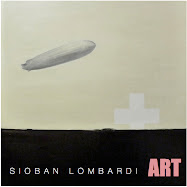
Sophie Calle’s Take Care of Yourself was first exhibited at the 2007 Venice Biennale. The exhibition at Paula Cooper in Chelsea is the installation’s U.S. debut. The title is taken from the last line of a “break-up” email Calle received from a former lover, and the content addresses her inability to respond to the email. The body of work is constructed from 107 interpretations of the email. The invited interpreters are all women whose careers range from notable artists, authors, and performers, to those less publicly known including scholars, lawyers and scientists. Each interpretation is exhibited, either in text, pictorial analysis or video, and is accompanied by a photographed portrait of the interpreter.
Calle’s work consistently addresses intimacy, relationships, gender and identity and this exhibition is no exception. In addition, the notions of confidentiality; public vs. private experience; and the increasing inability of today’s society to cope with human experience are also brought into question. In the face of loss, Calle assembles her tribe to share the experience, acknowledge the loss and assess the situation.
One may interpret the dissemination of the email as a violation of the author’s privacy, yet despite guarantees of confidentiality, anything disseminated via electronic media is susceptible to examination at some time. In fact, it is electronic media’s ability to transmit such documents verbatim that communicate the actuality of the author’s intention and thus negate Calle’s ability to mediate the interpretations through a pitched verbal description of the dissolution.
At first blush, one is lured into the belief that they can more successfully apprehend the performative interpretations through the perfectly realized composite video wall. The subtleties of the textual interpretations seem lost if the viewer speaks any language other than French. It is as though one is reading a book jacket while being denied access to the pages and that the number of interpreters matters more than the content they provide. The experience is no different when one attempts to translate the encoded scientific diagrams and schematics. The video components too are actually sparse in the meaning they disclose. Laurie Anderson’s contribution provides neither visual nor verbal narrative, and Jeanne Moreau’s is so studded with evocative pauses and saturated with iconic persona, that meaning is withheld. Here, the notions of apprehension and quantity are actually Calle’s examination of identity. What this body of work so subtly conveys is that ultimately, despite the scale, sympathy and variety of one’s council, loss is rarely understood or mediated and remains a solitary and personal experience.



No comments:
Post a Comment